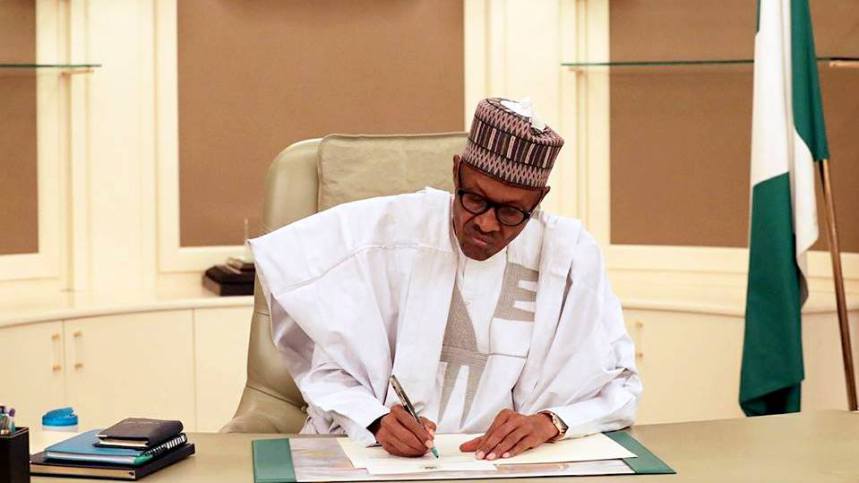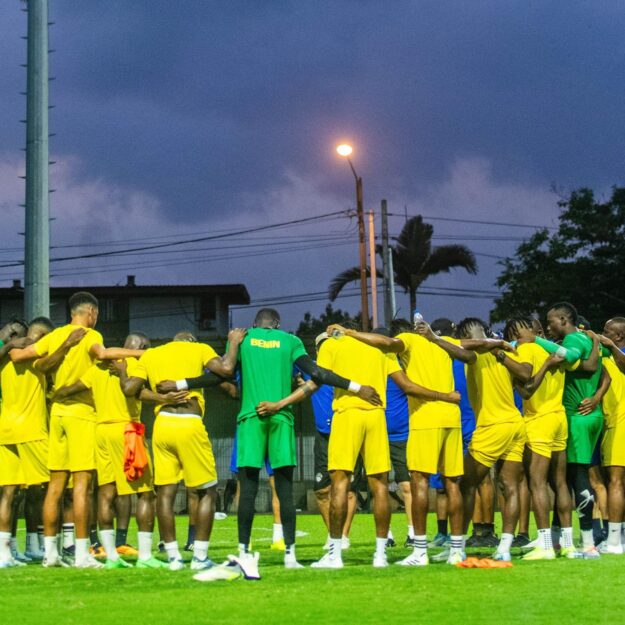
The Federal Government on Monday moved to raise power generation by signing an electricity road map agreement with a German-based energy firm – Siemens -at the Presidential Villa, Abuja.
President Muhammadu Buhari, who signed for the government challenged Siemens and local players in power generation chain to work towards achieving 7,000 megawatts by 2021 and additional 11,000 megawatts by 2023.
The target is raise power generation to and overall grid capacity to 25,000 megawatts.
Yesterday’s signing was the product of a meeting President Buhari had with German Chancellor Angela Merkel on August 31, last year.
Buhari reaffirmed his commitment to the development of the Mambilla Hydro Electric project and that various solar projects in the country.
Buhari said: “Our goal is simply to deliver electricity to Nigerian businesses and homes. My challenge to Siemens, our partner investors in the Distribution Companies, the Transmission Company of Nigeria (TCN) and the electricity regulator is to work hard to achieve 7,000 megawatts of reliable power supply by 2021 and 11,000 megawatts by 2023 – in Phases I and II respectively.
“After these transmission and distribution system bottlenecks have been fixed, we will seek – in the third and final phase – to drive generation capacity and overall grid capacity to 25,000 megawatts.
“With our strong commitment to the development of Mambilla Hydro Electric and the various solar projects under development across the country, the long-term power generation capacity will ensure adequate energy mix and sustainability in the appropriate balance between urban and rural electrification.
“Our intention is to ensure that our cooperation is structured under a Government-to-Government framework. No middlemen will be involved, so that we can achieve value for money for Nigerians.
“We also insist that all products be manufactured to high quality German and European standards and competitively priced.
“This project will not be the solution to all our problems in the power sector. However, I am confident that it has the potential to address a significant amount of the challenges we have faced for decades.
Read Also: Nigeria losses 1 trillion annually to power failure – news
“It is our hope that as the power situation improved; we will improve investor confidence, create jobs, reduce the cost of doing business and encourage more economic growth in Nigeria.”
He thanked the group for the roles being played towards dramatically improving the quality of Nigeria’s electricity supply.
According to the President, fixing the power sector remained a key priority for his administration.
He said: “We all know how critical electricity is to the development of any community or indeed any nation. And in Nigeria, whilst we are blessed to have significant natural gas, hydro and solar resources for power generation, we are still on the journey to achieving reliable, affordable and quality electricity supply necessary for economic growth, industrialization and poverty alleviation.”
Noting that there had been many attempts at solving the electricity problem, he said that previous governments have explored state-funded solutions through the ill-prepared National Independent Power Projects (NIPPs).
He also recalled that previous administrations explored the installation of large emergency power projects.
President Buhari said that the past governments also embarked on partial privatisation of the power generation and distribution sectors.
These various interventions aimed at solving the electricity problem, he said, have yielded an imbalance between the amount of power generated and the amount available for consumers.
Despite over 13,000 megawatts of power generation capacity, Buhari noted that only an average of 4,000 megawatts reliably reaches consumers.
He added: “Now, we have an excellent opportunity to address this challenge. This government’s priority was to stabilise the power generation and gas supply sector through the Payment Assurance Facility (PAF), which led to a peak power supply of 5,222 MW. Nonetheless, the constraints remained at the transmission and distribution systems.
“This is why I directed my team to ask Siemens and our Nigerian stakeholders to first focus on fixing the transmission and distribution infrastructure – especially around economic centres where jobs are created.
“Whilst it was evident that more needed to be done to upgrade the sub-transmission and distribution system, our Government was initially reluctant to intervene as the distribution sector is already privatised.
“I am therefore very pleased with the positive feedback from private sector owners of the distribution companies, who have all endorsed Government’s intervention to engage Siemens on this end-to-end plan to modernize the electricity grid.”
Siemens Global Chief Executive Officer Joe Kaeser said the road map will enable the country deliver its power capacity in the first phase of 7,000, second phase up to 11,000 and third phase 25,000 megawatts.
Kaeser said: “That will significantly enhance the country’s power supply and gets the country to the next industrial phase. We believe we will all very much benefit together, the people of Nigeria and of course Siemen as a company.
“I’m very honured that we were able to sign this road map today in the presence of President and our partners. I will personally make sure that this will be the big success of Nigeria, Siemen and our partners in the country.”
On the cost and during of the project, Kaeser said: “We have really talked about solutions and how it can bring power to the people literally, from generation to transmission and effective distribution.
“Yes, we have been talking money at this time because this about a long term partnership and is a road map which we are going to work all the way till 2025. The first phase is supposed to be done by 2021, second phase till end 2023 and the final phase by 2025.”
The Director-General of the Bureau for Public Enterprises (BPE), Alex Okoh, described the partnership as credible.
He said that the technical evaluation from both the transmission and distribution had been down to know the gaps in terms of the technical infrastructure and to improve the transmission and distribution capacity.
Okoh said the next phase would bother on commercials and to cost evaluation of what the Siemen intervention will entail before they will agree on the financial frameworks to domicile the financial commitment within the books of the Distribution Companies (DisCos).
The: “If you look at the amount of losses that is being experienced in the entire power sector, there are huge. We are talking about double digits losses between 30 percent and in some DisCos almost 70 per cent ATC and C losses.
“So, that is a strong signal that the way the market is currently structured is not sustainable and if we don’t improve the critical infrastructure in terms of the winning capacity of TCN and also the distribution capacity of the DisCos, then this kind of situation will persist for a long time.
“That is why we welcome this intervention and we believe that within the timelines that have been directed by Mr. President, we will be able to significantly improve power supply in the country.” he said
You may be interested

My Goal Was To Achieve Success With Ten Hag At Man United –De Ligt
Webby - November 14, 2024Netherlands international Matthijs de Ligt has suggested Erik ten Hag didn’t get the breaks he needed to keep his job…

I Want To Take My Game To New Level –Lookman
Webby - November 13, 2024Super Eagles winger Ademola Lookman has reiterated his commitment to take his game to the next level.The Nigerian international, who…

AFCON 2025Q: Benin Republic Hit By Another Injury Blow
Webby - November 13, 2024Benin Republic will be without two more players for their 2025 Africa Cup of Nations qualifying matches against Nigeria and…






















![American Pastor, David Wilson Seen Eating The Box Of Woman Who Isn’t His Wife [Video]](https://onlinenigeria.com/wp-content/uploads/2019/10/american-pastor-david-wilson-seen-eating-the-box-of-woman-who-isnt-his-wife-video-150x150.jpg)








